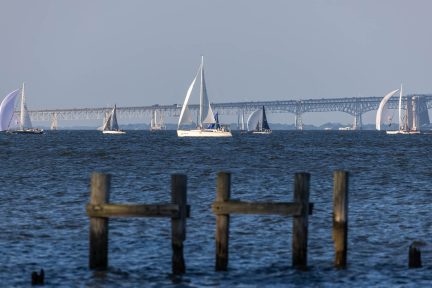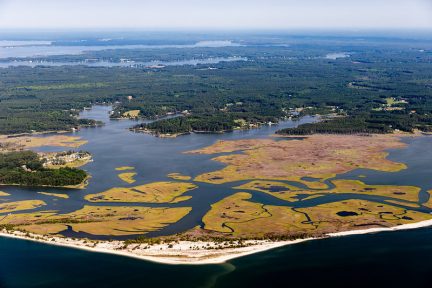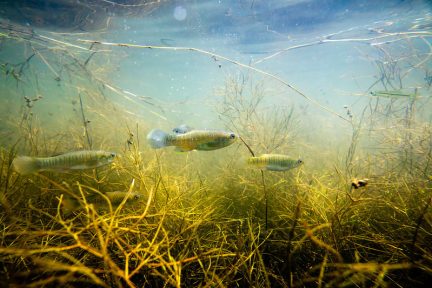Chesapeake Executive Council announces plans to revise existing Watershed Agreement
New Agricultural Advisory Committee formed to advise regional partnership
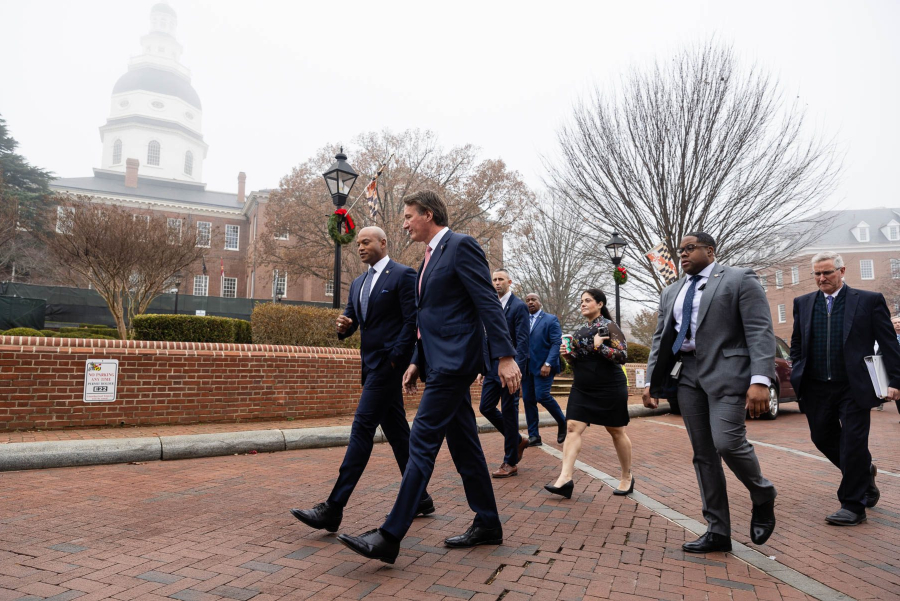
Annapolis, MD— The Chesapeake Executive Council gathered in Annapolis, Maryland today for what may be considered the most important meeting for the Chesapeake Bay Program since the signing of the 2014 Chesapeake Bay Watershed Agreement 10 years ago. The Executive Council, which guides the policy agenda and sets conservation and restoration goals for the regional federal-state partnership, announced plans to revise the existing Watershed Agreement over the next year.
“Today’s actions by the Chesapeake Executive Council show that we remain steadfast in our commitment to achieving a healthy watershed through partnership,” stated Virginia Delegate David Bulova, chair of the Chesapeake Bay Commission. “Refreshing the voluntary Watershed Agreement that guides our efforts will help make sure that we are science-led and people-driven as we re-dedicate ourselves to delivering clean water, conserved landscapes and thriving living resources for all.”
The year 2025 is the target date for many of the 31 outcomes in the Watershed Agreement to have met their goals by.
Two years ago, the Executive Council directed the Bay Program’s Principals’ Staff Committee to recommend a path forward to the year 2025 that prioritized and outlined the next steps for meeting the goals and outcomes of the Watershed Agreement and prepare recommendations that continued to address new advances in science and restoration while focusing on the future of the Chesapeake Bay Program beyond 2025.
The result is A Critical Path Forward for the Chesapeake Bay Program Beyond 2025, a report developed over the past year-and-a-half by a steering committee consisting of representatives from multiple partnership stakeholders and presented for public feedback in summer 2024. The report outlines two fundamental recommendations for the future of Chesapeake Bay restoration, as well as the partnership.
In response to this recommendations report, the Executive Council directed the Principals’ Staff Committee today to revise the existing Watershed Agreement by the end of calendar year 2025 and work to streamline the existing partnership for it to be more inclusive of all communities, more manageable for Chesapeake Bay Program staff and supportive of all partners as they work to achieve their commitments.
“I was proud to join my fellow Governors and council members today to discuss the progress we’re making and renew our commitment to protecting the Chesapeake Bay watershed,” said Pennsylvania Governor Josh Shapiro. “Pennsylvania’s portion of the watershed is significantly improving because we’ve brought people together and invested in Chesapeake Bay restoration efforts. This is a great example of what’s possible when we work together—not just across different levels of government here in Pennsylvania—but across state lines and with the federal government as well. My Administration is proud of this progress—and we’re going to continue to work to restore the Chesapeake Bay for years to come.”
To help accelerate progress toward meeting the partnership’s water quality goals, the Executive Council formally signed a directive at today’s meeting, forming a new Agricultural Advisory Committee. As the first new advisory committee created for the Chesapeake Bay Program since the late 1980s, the Agricultural Advisory Committee will advise the Executive Council on strategies and opportunities for the diversity of agricultural operations across the watershed, serving as a voice for producers and industry to the partnership on agricultural production and conservation.
“As we look beyond 2025, Virginia remains fully committed to our Chesapeake Bay efforts and the future of this partnership, but we must see a focus on policies and principles that embrace effective government, accountability and prioritization of funding, and voluntary, incentive-based approaches that work with our farmers, and not against them,” said Virginia Governor Glenn Youngkin. ”My Administration has pressed for change and targeted investments, and it is crucial that the path forward takes into account the significant existing programs and work that Bay jurisdictions are already contributing to reach our goals.”
The Executive Council also heard from the Chesapeake Bay Program’s Local Government Advisory Committee, Scientific and Technical Advisory Committee and Stakeholders Advisory Committee, before unanimously voting Maryland Governor Wes Moore for a second term as Chair, to carry the partnership forward into 2025.
“Today we laid the foundation for a new future for Chesapeake Bay restoration and strengthened our commitment to partnership,” said Maryland Governor Wes Moore. “We’re going to use the latest science to improve shallow water habitat, bolster wildlife populations and create new economic opportunities for all communities throughout the Bay watershed. We face a monumental task, but thanks to the leaders, scientists, workers and volunteers who worked to improve the Bay’s health for the previous four decades, we know what’s left to do and how to do it. So now we’ll refine the goals we must meet to ensure future generations can enjoy and benefit from this national treasure.”
The Executive Council was formed as part of the Chesapeake Bay Agreement of 1983 and consists of the governors of Delaware, Maryland, New York, Pennsylvania, Virginia and West Virginia, the mayor of the District of Columbia, the chair of the Chesapeake Bay Commission and the administrator of the Environmental Protection Agency, who represents the federal government.
Additional Quotes
“Today, leaders from across the Chesapeake Bay joined together in the spirit of partnership, progress and potential to discuss the next phase of Bay restoration. EPA, under the Biden-Harris Administration, has worked tirelessly to build strong relationships up and down stream, award funding where it will be most impactful and bring new voices to the table that are driving real change through the watershed. We remain committed to these efforts as we look Beyond 2025.”
Michael Regan, Administrator, Environmental Protection Agency
“We must continue our commitment to conserve a healthy, resilient Chesapeake Bay watershed. With the Chesapeake Bay Program moving into 2025, this Executive Council will be in a position to ensure the future of this critical and unique body of water that benefits many communities.”
John Carney, Governor, State of Delaware
“New York State is committed to our ongoing partnership with the Chesapeake Bay Program to improve the water quality of the Chesapeake Bay and Susquehanna River Basin. Agriculture is a crucial contributor to New York's economy and natural resources stewardship, and with the creation of the Agricultural Advisory Committee, New York looks forward to continuing to support the agricultural community’s efforts to create a healthier watershed. A strong and sustained clean water partnership, carefully attuned to local community priorities and benefits, is essential to the success of Chesapeake Bay restoration efforts.”
Kathy Hochul, Governor, State of New York
"Washington, DC is proud to continue our participation in the Chesapeake Bay Program, focusing on improving water quality in our rivers and waterways while preserving vital environmental resources. Going into 2025, our commitment to protecting the watershed and ensuring the health, cultural value and resilience of our ecosystem for future generations remains strong."
Muriel Bowser, Mayor, District of Columbia
“The Local Government Advisory Committee thanks the Chesapeake Executive Council for their continued commitment to the Chesapeake Bay Watershed Agreement. We value consistency and applaud the Watershed Agreement signatories for staying the course toward clean water and thriving living resources. Each and every resident of the Bay watershed must understand how a healthy Bay benefits them, and these critical leaders need to understand why proposed changes are necessary, so they may effectively relay this message to their residents. Local leaders are ready and willing to support watershed protection and restoration, with added technical and administrative assistance to be true partners in this work.”
Daniel Chao, Chair, Chesapeake Bay Program Local Government Advisory Committee
"As the Executive Council contemplates what lies ahead, we invite them to envision a future that protects what we have, revitalizes more of what we've lost, and lays a foundation for a robust and sustainable Bay watershed that future generations will inherit.”
Chuck Herrick, PhD., Chair, Chesapeake Bay Program Stakeholders Advisory Committee
“We welcome the new Agricultural Advisory Committee and look forward to working together to advise the Chesapeake Bay Program as it progresses through its 2025 milestone year and into an even stronger, more effective future.”
Larry Sanford, PhD., Chair, Chesapeake Bay Program Scientific and Technical Advisory Committee
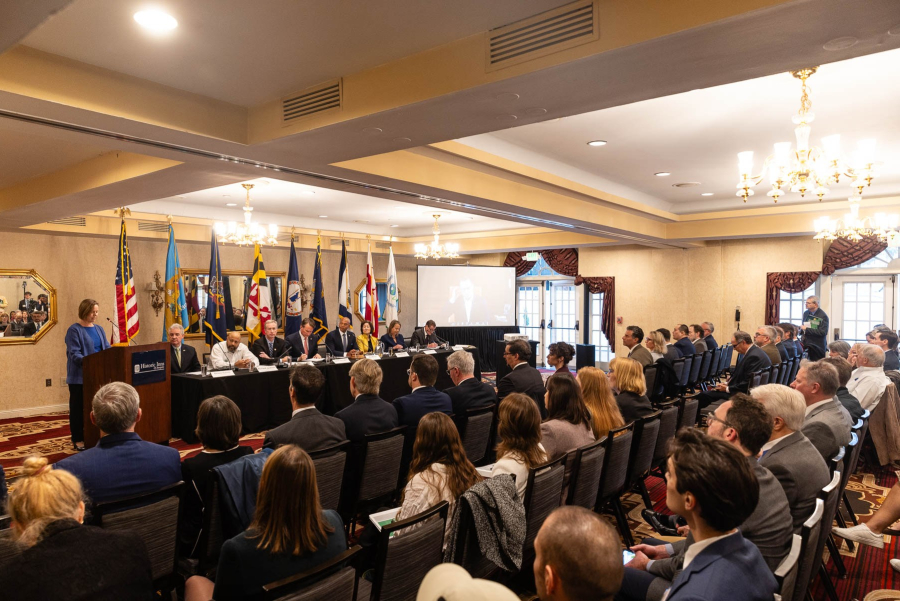
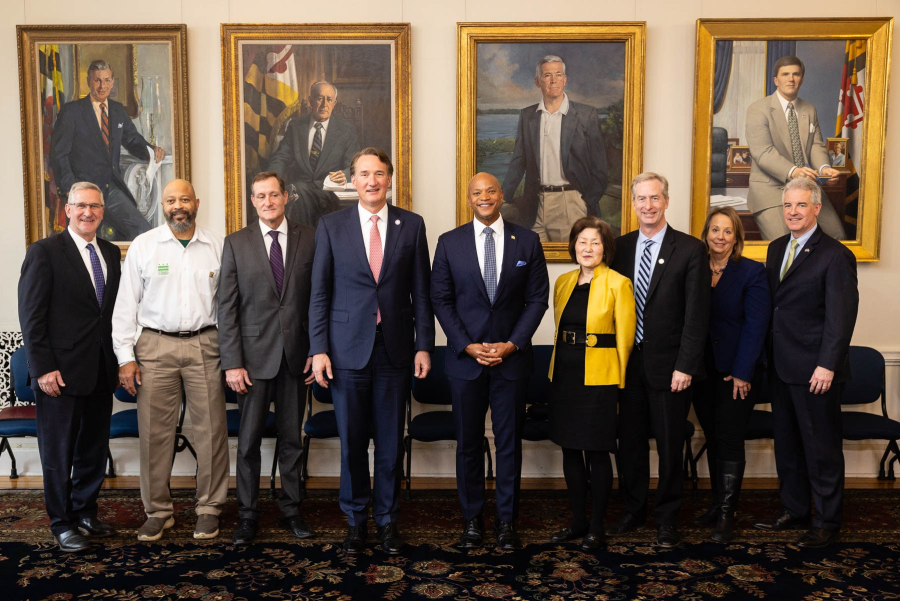
Supporting Materials
- Chesapeake Executive Council: Charge to the Principals' Staff Committee--Charting a Course Beyond 2025
- Charting a Course Beyond 2025 Backgrounder
- Agricultural Advisory Committee Directive
- Agricultural Advisory Committee Backgrounder
- Local Government Advisory Committee Report to the Executive Council
- Scientific and Technical Advisory Committee Report to the Executive Council
- Stakeholders Advisory Committee Report to the Executive Council
- Advisory Committee Backgrounder

